#This is one of the MAJOR things I love about Ljubljana :3
Explore tagged Tumblr posts
Text

LIARS!! It is STORMING!!!
It is POURING!!
It is THUNDERING!!!

This queer dragon is SERVING MAJOR CUNT to the capital city ⛈️💃💃💃💃💃💖💖💖
#moca talks#aaaaaaaahhhhh nothing like a wonderful downpour with lightning that makes your fingers tingle and thunder that shakes your insides#i love it#This is one of the MAJOR things I love about Ljubljana :3
4 notes
·
View notes
Text
Adriatic Tour - September 2019
My fourth Rick Steves tour, and the second in 2019, was his Best of the Adriatic. A two-week tour taking in Slovenia and Croatia, with an overnight stop in Bosnia. Seeing three of the now seven nations created when Yugoslavia broke apart in the 1990s.
A Bit of History
Yugoslavia was created after World War I with the defeat of both the Austria-Hungarian Empire and the Ottoman Empire. That changed in the 1990s when the regions started to breakaway to create independent nations.
Slovenia in the north is a member of the European Union and in the Schengen Zone. Thus my arrival in Europe in Munich was sufficient for my passport to be stamped. Slovenia also is on the Euro, so money I had leftover from my previous trip was used for the first several days. And, because of the borders, and the Schengen states, we seamlessly drove within Slovenia with a 30-minute drive into Italy on the outskirts of the city of Trieste.
Croatia and Bosnia on the other hand have their own currencies and tighter border controls. We went through customs and passport control as we passed through those borders. The Croatian Kuna is the Croatian currency with little acceptance of Euros. The tour made sure we did not need to have any of the Bosnian currency by having group lunch and dinner during our stop in Bosnia. Breakfast of course was included with the hotel. Luckily the gelato vendors in Mostar near the famous bridge took Euros or Kunas.
Slovenia
The main highlights of Slovenia was Ljubljana, the capital and Lake Bled.
Ljubljana is an old-world city with cafes and wide streets for easy walking. Clearly the Austria-Hungarian influenced the growth and culture of the city. I spent hours walking along pedestrian streets and into squares simply enjoying the ambiance of the city. One highlight was to see several buildings designed by a famous local architect, Joze Plecnik. One currently is a high school that was a block from the hotel we stayed, and the other is a university library. The playfulness of the library is that windows are shaped as if they were open books.
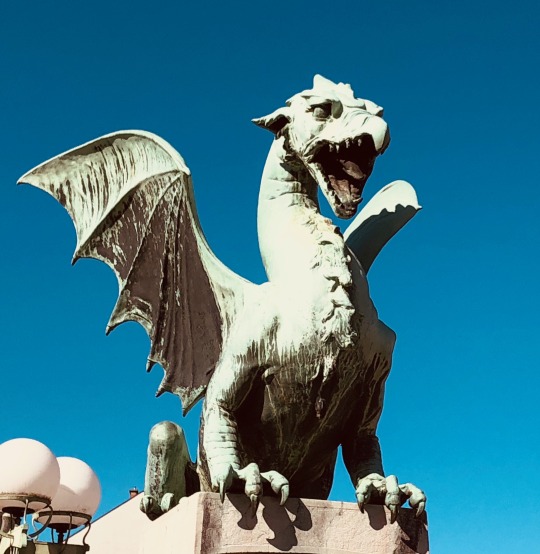




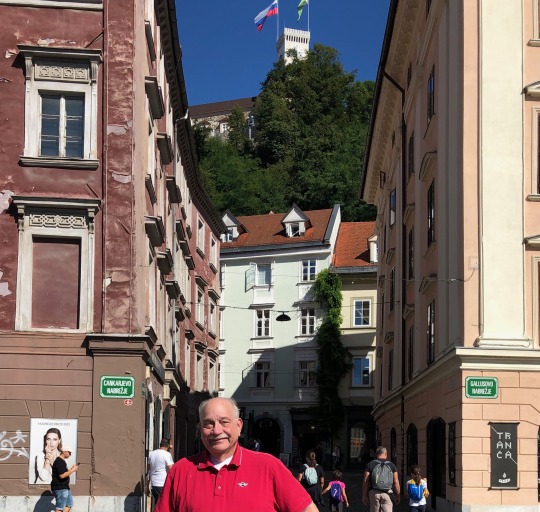


Lake Bled is within the Julian Alps and close to the Austrian and Italian borders. I’ve been told the only island in Slovenia is the small one in the lake with a church on it. A castle commands a high view from one side of the lake. After touring the castle, we were given time to stroll, hike, walk around the lake. That was a serene and beautiful way to see this marvelous place. Actually I did not walk totally around the lake but went about half way to 2/3 in one direction and returned the same way. So, yes, may not have walked all the way around, but covered the same distance. Preferred to stay in woodsy forest setting than ending up in the developed town by the lake. One note, a villa used by Yugoslavian strongman Marshal Tito now is a small hotel.



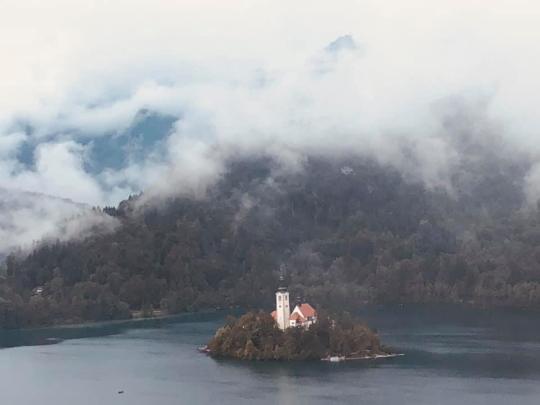
Other highlights of Slovenia is the beautiful vistas driving through the Julian Alps and a stop in the town of Kobarid to see a World War I museum. Several major battles were fought in the area and a young Ernest Hemingway served as an ambulance driver which he later turned into his novel A Farewell to Arms.
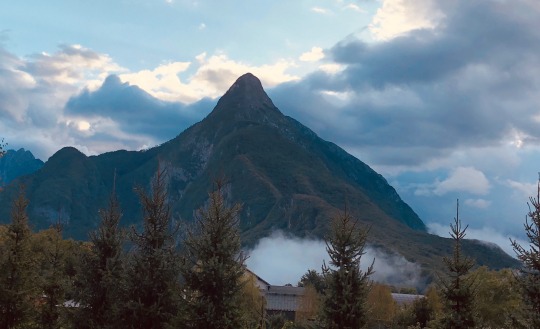
It was during this final stretch in Slovenia that we crossed into and out of Italy in about 30-minutes.
Croatia
The bulk of the two-week tour was in Croatia mainly spending the time along the Adriatic coast from the Istrian Peninsula down to Dubrovnik.
Istrian Peninsula juts out into the Adriatic and is close to Venice and the Italian coast. Supposedly from the town of Rovinj you could see Venice on a clear day. Well they say that but I didn’t. There is a heavy Roman and Venetian influence in the towns we saw including Roman amphitheater in Pula.

Rovinj
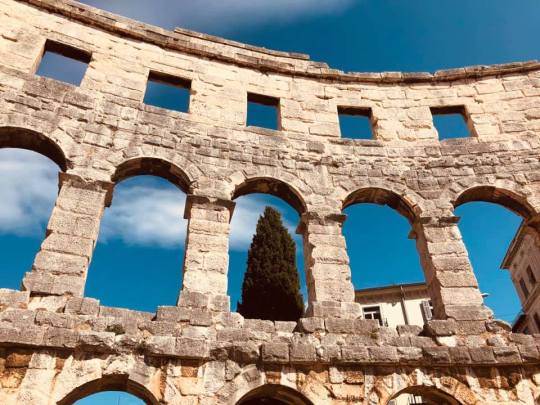
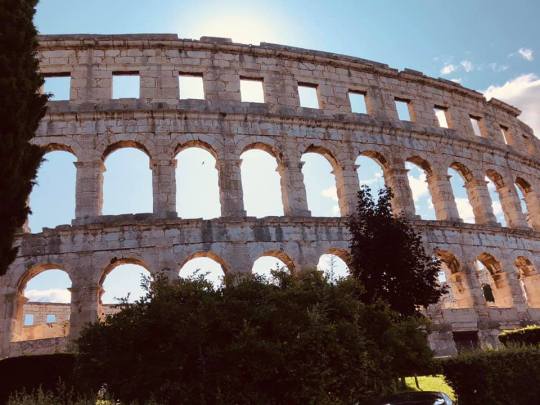

Three from Pula
Venetian influence is seen in Rovinj and Opatiija. As I walked into the warrens of the streets of Rovinj, I felt as if I was walking in Venice or a Tuscan or Umbrian hill town. It was as close to feeling in Italy without being there.


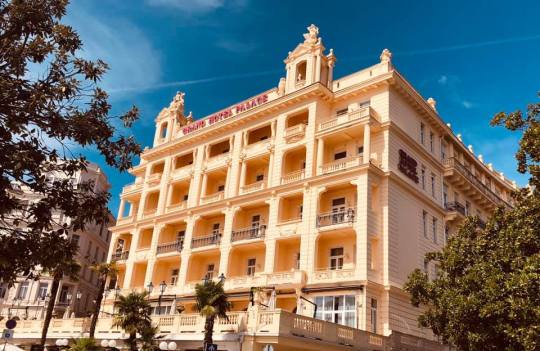
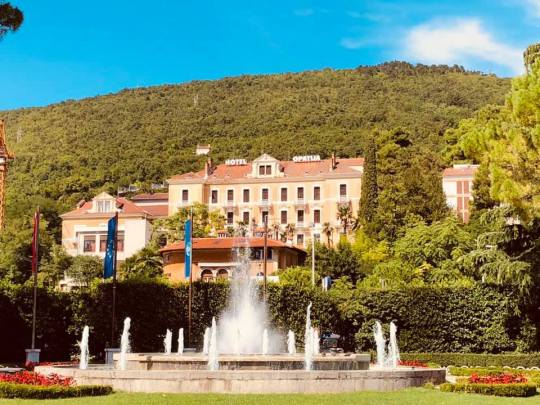

5 photos of Opatija
The interesting note about the Istrian Peninsula is that the towns all have two names, the Croatian name and an Italian name even though it has been centuries since the area was under Roman or Venetian control.
Plitvice Lakes National Park is an absolute jewel. The tour made sure we entered the park early in the morning at one end that is not the usual entrance for tourists. The goal was to walk through the park which is full of lakes and waterfalls until we arrived at the main entrance. It was a six mile, 16,000 steps walk seeing amazing vistas and waterfalls all by noon! I don’t think my photos do it justice. At one point I mentioned to someone I was walking with that it reminded me a bit like Milford Sound in New Zealand. Within minutes heard someone going in the other direction say the same thing.
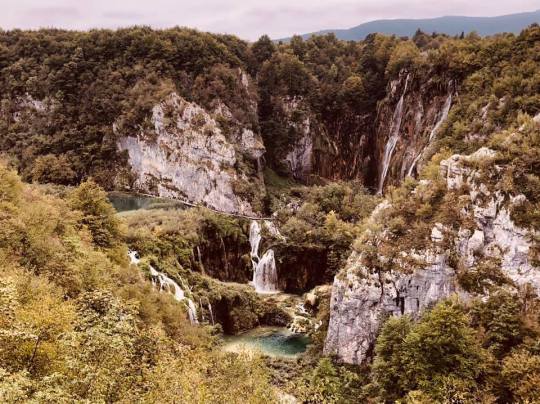
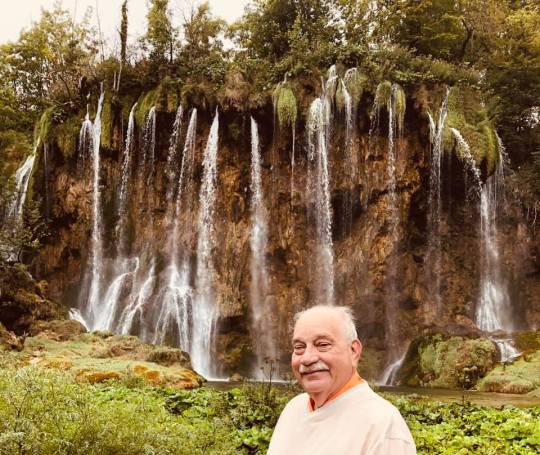
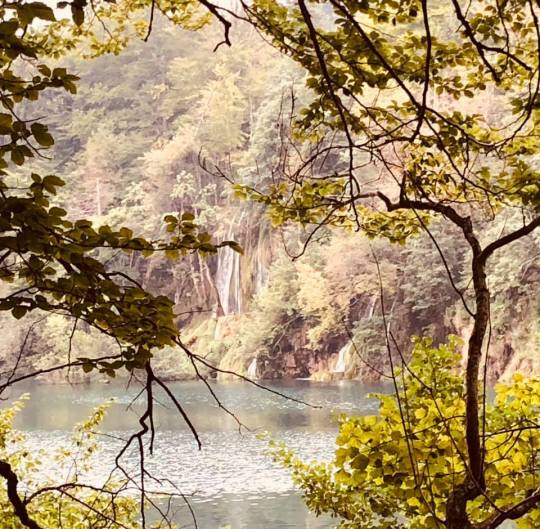


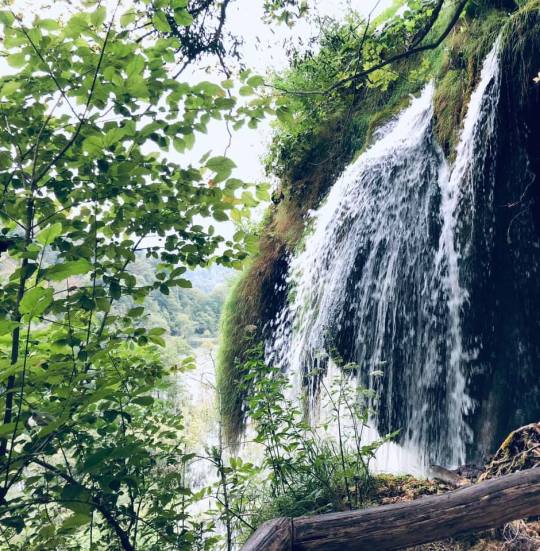
Even though the tour guide was specific about where we should meet near the end of the trail, we lost four women. I later said they saw the walk through the park as a race and not a walk. They were in front of all of us and took the wrong turn near the trail end. While we waited where we were suppose to be, they ended up walking back to where we entered the park! Of course we found them but had to change where we would have lunch since their misadventure forced a change of plans.
Split
One of the jewels of Croatia is Split. An amazing beautiful city nestled on the Adriatic. We spent two nights there (thank goodness, was able to get laundry done) and was absolutely beautiful. Was supposed to meet up with my ex-boss who was going to be there at the same time, but he cancelled on me. So I spent free time walking along the seaside walkway.
The main tourist attraction is the remains of the Roman emperor Diocletian’s palace. The modern city used the remnants as a base to build along the waterfront. One part of the basement of the palace that is intact supposedly was used in the filming of the HBO show “Game of Thrones.”




I was able to find the synagogue in Split which is barely used for services on Saturdays or for holidays.
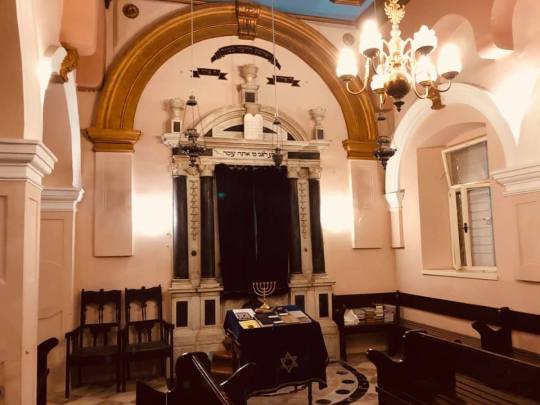
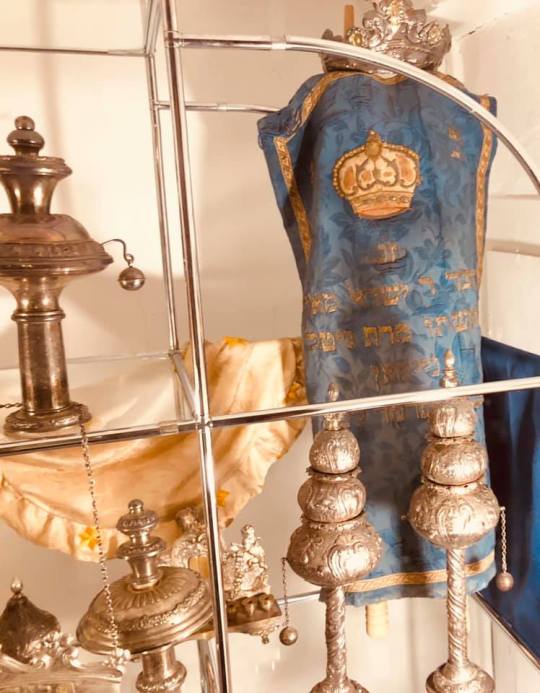
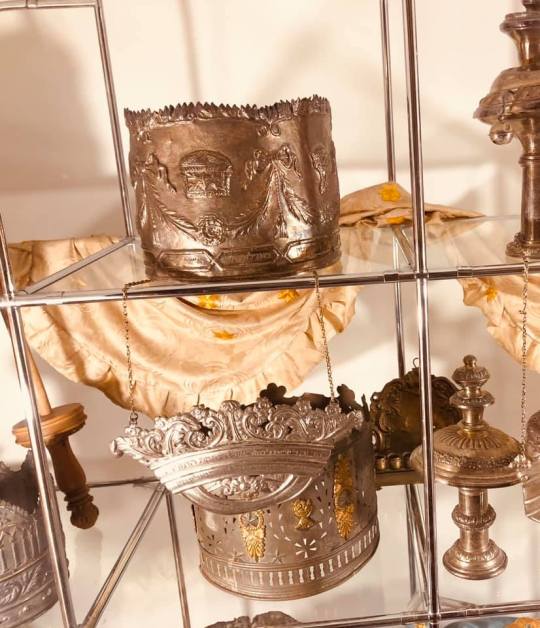
Split is definitely a place I would return to if the opportunity came again.
Korcula
A two-week tour is somewhat exhausting so the last weekend we were given a free day on the island of Korcula. It is off the coast of Croatia between Split and Dubrovnik. To get there we had to take a ferry from the mainland. And we needed the break. Absolutely gorgeous with amazing views of the Adriatic. I had not planned on bringing a bathing suit to go into the sea but if I had to do it over, would have just to get into the Adriatic. As is, I was only able to dip my toes and hands.




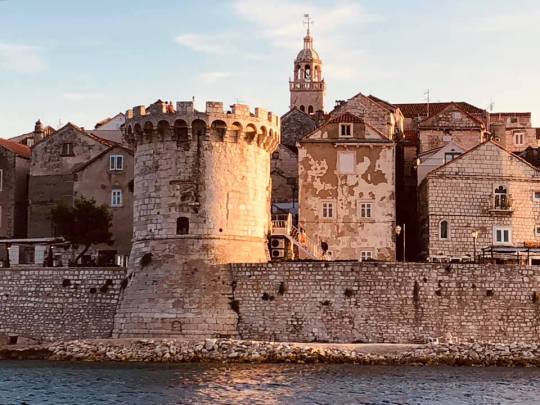

Dubrovnik
The old city is an amazingly beautiful walled city. We were given a walking tour by a local who lives inside the walled city. Luckily we did the tour in the morning beating the crowds from a cruise ship that disgorged hundreds of tourists into the small area of the walled city. Clearly a case of over-tourism. There were more tourists than necessary for us to fully enjoy the scenery.
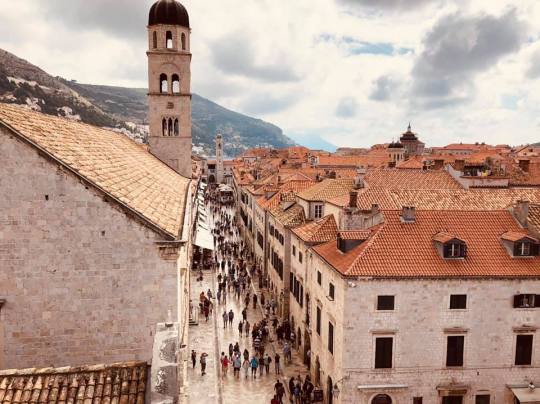

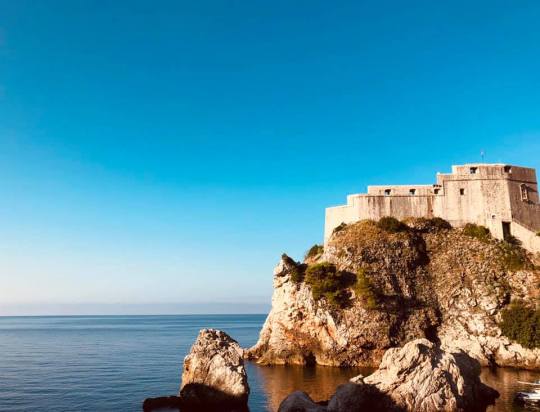
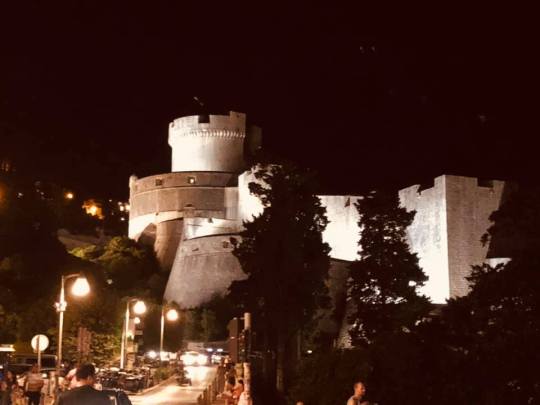

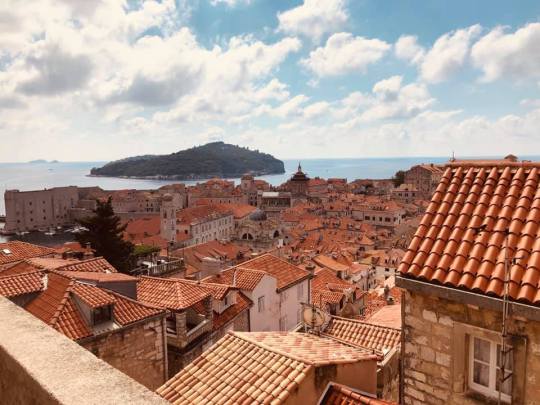
The highlight of the day was walking around the city wall and seeing the city below in its full beauty. And, similar to Split, I was able to go to the synagogue which is now a non-working synagogue.



Bosnia
One of the “Wow moments” of the tour was our overnight trip to Mostar in Bosnia. Mostar sits in a river valley with high hills surrounding the city. It was from those heights that the town was shelled during the siege that devastated it during the wars in the 1990s.
The famous arched old bridge was destroyed - a bridge that was originally built by the Ottomans in the 16th Century. As the area calmed down and peace was relatively restored the bridge was rebuilt and is the main tourist attraction in the old town area. Locals will solicit money before diving off the bridge into the river. The crowds swell to see this sight. And, according to the tour books, so do the pickpockets. Luckily didn’t bother me.




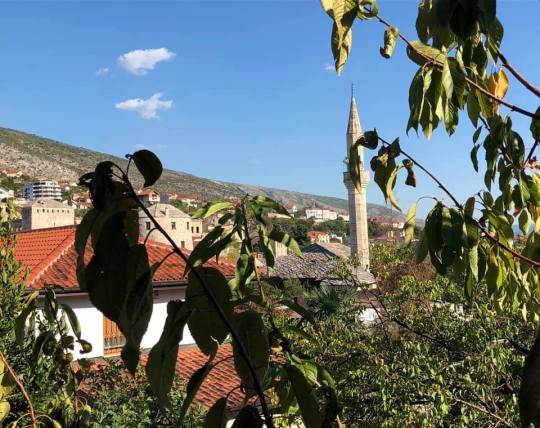
We had a local guide, a Bosnian Muslim who described how she and her family survived the shelling and the siege. At one point when the bridge was destroyed, her family was divided by the river without contact from the other side for weeks. She recalled her brother still has shrapnel from a shelling that also killed her uncle. We saw numerous buildings still with signs of being damaged from the war.
She was not enthusiastic about the peace accord that ended the war. The agreement was brokered by the Clinton Administration and established a couple of autonomous ethnic zones, especially one for Serbians. She felt that has led to a country with multiple presidents and a lack of cohesion as a nation. However so far that agreement has held.
Observations
This was a region of Europe on my “must see” list for some time. Now I can go to other parts of Europe without wondering will I get to the Adriatic area. A member of the tour said to me that it is a tribute to Leila that I continue to travel, something we loved to do together.
Loire Valley and South France in spring 2020 and South Italy in October 2020 coming up.
1 note
·
View note
Text
The best Balkan.
For the last couple of years, I’ve been hearing and seeing incredible things about Slovenia. Since we didn’t have time to add it to our Balkans trip itinerary, I figured I would claim my last week of holidays and spend an entire week hiking, swimming, and exploring the ‘green’ country of the Balkans. Originally I was planning on leaving alone, but when I found out that my friend Dave was going to be travelling at the same time, I suggested he join me for Slovenia, and he gladly accepted.
After a night in Venice, we headed to the capital city of Slovenia, Ljubljana, where we spent 2 days learning some history, eating some good food, and exploring the city on bike and foot. After our severely delayed bus ride, we checked-in to our hostel before grabbing some typical Slovenian sausages for lunch. We then walked up to the Ljubljana Castle, where we spent some time exploring the various rooms, and walking up to the tower/lookout, where we got stuck in an agressive rain/hail storm. The rain thankfully subsided intime for us to end the day off on a free walking tour, before grabbing dinner along the river, and later on, participating in a pub-crawl.

The following day was spent exploring Ljubljana by bike, visiting a few museums, hanging out at a park, and getting rooftop drinks at sunset. After grabbing dinner, we went for a little walk around town before having an early night in.
The next morning we hopped on a short bus ride to Bled, a beautiful, picturesque lake, famous for its turquoise water and (man-made) island in the middle. Ever since I saw a photo of the place years ago, I’ve been determined to one day visit. And boy was it even more beautiful in person. The forecast had said clouds and thunderstorms, but the sun pulled through and we were able to spend all our time outside, hiking, swimming, and tanning. The lake is about 6km in circumference so we spent our first day walking all the way around the lake, as well as visiting two viewpoints, one at Bled Castle, and the other at the end of a 45-minute hike.
Our second day was spent at Lake Bohinj, another beautiful, much bigger lake, that actually reminded me a lot of BC. We decided to rent an electric scooter for the day, to have more flexibility in regards to time, but this decision ended up backfiring when our scooter stopped working right as we got to the top of a lookout point. I figured if we let it rest for a little bit, the engine would cool down and eventually start-up again, but after hanging out and grabbing some food at the top of the mountain/lookout point, nothing. Since we were at the top of a mountain, we were able to make it back into town mostly by riding in neutral all the way down, but once the road flattened out we ended up walking for a while, stopping people along the way to ask for help, all of which could not get the bike to start either. We eventually found a tourism office, where we asked a young Slovenian guy if he could help us. When him and 2 of his friends couldn’t figure out how to fix the scooter (even after calling the shop owner), they decided to put it in the back of a van, and drive us back to Bled. The shop owner ended up paying them for gas/their time, which we were so relieved about! We thanked them a million times, gave them all big hugs, and were (finally) on our way back to our hostel.

After a perfect morning paddle boarding on the lake, we caught a bus back to Ljubljana, where we began our journey by train, to visit some of the coastal towns of Slovenia. To cut our journey in half, we decided to make a stop at the famous Skocjan Cave. We caught a free shuttle bus from the train station to the cave, went on a guided tour, and found out that there were no shuttle busses running to bring us back to the train station, where we were to catch our train to the coast. What a lovely situation to be in, stranded in the middle of Slovenia, with no ride to the train station, and the last train of the day leaving in 20 minutes. We desperately asked a worker for advice, who she suggested we walk, until she realized we wouldn’t get there in time. She then decided to call her mom to see if she could give us a ride on their way home (even though it was apparently forbidden for her as an employee to offer rides to customers/travellers). Thank God for kind people! We arrived at the train station right in time to catch the last train to Koper - what a relief. After arriving, we checked-in to our hostel, grabbed dinner, and wandered around town a bit, before heading to bed.
The next morning we woke up bright and early, spent some time walking around the town of Koper, before renting an electric scooter and driving along the coastline, stopping first in the town of Izola for a nice walk and ocean-side cocktail, and then Piran, where we stopped for lunch, and visited a few tourist attractions. We made sure to check that the road was more or less flat so that we wouldn’t have a repeat of our last scooter rental experience. It ended up going very smoothly, and we got back to Koper in the late afternoon, in time to grab a sunset beer, before dinner and another early night in.
After splitting up with Dave, I had 3 days to spare before my flight home from Venice (since the roundtrip flight from Paris was much cheaper than the one to Ljubljana), so I decided to make my way up the Istrian Peninsula by bus, stopping to explore a few cities along the way, since they’re all quite close to each other and small enough to explore in a day. First up was Rovinj, a picturesque town known as ‘little Venice’ built on a rocky spur. I locked up my bag at the bus station and spent the majority of the day wandering around town aimlessly, getting lost in the narrow streets, and eventually following the coastline to the beach, where I spent some time people watching and enjoying the sweet sound of the ocean.

In the late afternoon, I made my way back to the bus station to pick up my things and catch a bus to Pula. I was so shocked by the amount of British tourists in both Rovinj and Pula, I almost forgot I was in Croatia! After checking into my hostel, I got dinner and wandered around the city center with a Canadian guy from my hostel dorm. The following day we explored more of the city, visiting an old castle as well as the famous Pula Arena, the only remaining Roman amphitheatre to have four side towers and the most well preserved monument in Croatia. In the afternoon we decided to head to the beach, where we spent a few hours taking it easy, reading, and enjoying the sun. On our way back to the hostel we picked up groceries to make our own dinner, since the food options all seemed to be very overpriced, and of sub-par quality.
My 6 hours in Trieste the following day were spent walking around the city center, visiting some sights, stopping for coffee a few times, and (obviously) treating myself to a delicious pizza & glass of wine. I felt so bougey sitting at a nice restaurant and getting the most expensive pizza on the menu, until I realized the exact same meal would have costed double the amount in Paris. After taking a brief nap on a bench along the pier, I eventually made my way back to the bus station, where I caught a bus to the Venice airport. I remember it being so incredibly hot this day, I ended up spending so much time just sitting in random shady spots around the city, trying my best to avoid possibly fainting.
Another trip for the books, and a region of the world I highly recommend everyone explore! Slovenia had some of the most beautiful landscapes I have ever seen, and the fact that a lot of it reminded me of home was a big plus. If I were to do it again, I probably would have rented a car to have more flexibility while travelling in Slovenia, and I definitely would have skipped Pula altogether.
0 notes
Text
Luckbox Mark Cuban Hates Bitcoin And Gold, The Two Best-Performing Assets
I was around for the 1990s tech bubble and the most shocking deal I remember from that time period was when Mark Cuban sold what was basically just a domain name, Broadcast.com, along with some recording equipment he had at home, for $5.7 billion to Yahoo in April of 1999!
At the time, I was moving my company, Stockhouse.com, which was the top financial website in many countries across the world then, towards a Nasdaq listing and we had just rented out the office across the street from the New York Stock Exchange for some extravagant sum, like $1 million/month.
We were preparing to raise $300 million, though, and become essentially an online version of CNBC in what was called “broadband” then. We even hired away one of CNBC’s top producers, who turned out to be the worst employee I’ve ever had and after three months, we ended up paying him out some obscene sum just so he’d leave.
Well, a year went by and the tech bubble burst so I ended up selling the company for peanuts. I looked back on Cuban’s deal and thought two things. Wow, his timing for the sale was perfect, getting out before the tech bubble popped.
And, secondly, he must have been the luckiest guy in the world or, more likely, had participated in some sort of collusion with some directors in Yahoo to manage to sell what was basically nothing for over $5 billion!
It was literally worse than most ICOs these days… it was simply a web address and some cheap recording equipment lying around Mark’s house! And, Yahoo never even did anything with it… at all. In fact, if you go to Broadcast.com today, it just forwards to Yahoo.com.
This was easily the most expensive domain name sale ever!
Since then, the bumbling Frankenstein look-alike has gone on to buy a basketball team with his fortune and be featured in a few reality shows where he seems to seek constant attention.
So, when he came out this week and made a fool of himself, I had to laugh.
“I hate gold. Gold is a religion,” said crony-capitalist Mark Cuban in a recent interview, adding that he views cryptocurrencies as simply “collectibles.”
Mark clearly knows nothing about money or investments if he thinks gold is just a “religion” and cryptocurrencies are just “collectibles.”
In fact, if he had invested his profits from the ludicrous sale of his domain name into gold and then bitcoin he’d be the wealthiest person on Earth. Let’s do the math.
He owned approximately ⅓ of Broadcast.com when it sold for $5.7 billion, netting him $1.8 billion in 1999. According to Forbes, as of January 2018, he is now worth $3.8 billion, meaning he has averaged a 4% annual increase.
If, in 1999, he had put his $1.8 billion into gold, which was trading at $290, and just kept it there until now at $1,350, he’d be worth over $6.5 billion. Or, more than double what he is currently worth.
And, if he had taken his gold holdings and put it into bitcoin in, say 2011, when we recommended bitcoin at $3, he’d have made a gain of over 230,000% and his $1.8 billion, which would have been over $5 billion by investing in gold, would then be worth $12 trillion, easily making him the wealthiest man in the world… well, except for the Rothschilds and the secret banking families.
Of course, he couldn’t have possibly purchased that much bitcoin at that price as it simply didn’t exist at the time.
But, if he had just picked up some gold and bitcoin along the way, he’d certainly be worth much, much more than he is today.
Thus, he really hates gold.
“Hate is not strong enough,” Cuban said, “Hate with extreme prejudice… hate with extreme prejudice is not enough, hate with double extreme prejudice with an ounce of hot sauce.”
No wonder he’s so angry. He wasted most of his wealth trying to be a reality TV star and purchasing a company of guys who chase each other around bouncing a ball and throwing it in a basket to lull the enslaved masses into a beer-infused stupor.
Simultaneously, though, Cuban endorses both the corrupted, top-down education system and the centrally planned, fiat dollar-based fractional reserve banking system that is responsible for at least one major financial crisis each decade and impoverishes everyone except the rich… like him.
Precious metals and cryptocurrencies happen to be the free market solutions to a collapsing dollar system, empowering people everywhere to survive and thrive, but Shark Cuban hates them.
The fiat system of debt is a house of cards supporting his favorite religion, the State. Now there’s something to hate.
Religion may have been first, but the State has become the most dangerous religion, robbing millions and killing countless in endless wars for oil and power.
The reason gold is preferred by people who care about freedom is because a gold standard handcuffs the State. It restricted politicians from overspending on rackets like “national defense” and it prevented government from rapidly building up the "public debt."
As Alan Greenspan put it, a gold standard checks the welfare state. That's probably why Cuban hates gold.
Actually, it makes perfect sense why this clown would love the State: he regularly uses it to protect his corporate patents.
Ironically though, it’s another case of “do as I say, not as I do,” because Mark also claims to despise the patent system.
As IP Watchdog detailed:
“Cuban has an outsized influence in this patent debate, and is walking both sides of the aisle. He has personally invested hundreds of thousands of dollars into the fight to stop what he characterizes as stupid patents, and he has invested millions into a business that only has those same stupid patents as the main asset.”
IP Watchdog goes on to describe how Cuban raised his “personal financial stake in a non-practicing entity” that also just so happened to be suing Google over a patent claim.
How convenient…
This kind of hypocrisy and doublespeak has become expected from the guy who announced in January that his sports team will begin accepting bitcoin payments “next season.”
Instead of worshipping at the altar of the State for so many years and telling his followers “the most patriotic thing” a person can do is “Pay your taxes. Lots of taxes,” Cuban should’ve read TDV (subscribe HERE), where we’ve helped thousands of people capitalize massively on gold and crypto.
But who needs to be a wise or savvy investor when you can just use the guns of your government god to impose your will on others?
Sorry Mark (not sorry), but the religion of the State is collapsing while assets like precious metals and cryptocurrencies are helping usher in this new era faster than your goons can regulate.
How ‘bout them Mavs though?
YouTube
553 Videos | 124,495 Subscribers
Upcoming Events
d10e Liberland
Start date: April 12, 2018
End date: April 15, 2018
Location: Liberland
More Info
d10e is the leading conference on decentralization, exploring the future of fintech, ICOs, blockchain, the sharing economy, the future of work, and disruptive culture.
Since 2004, they have hosted organized 16 editions around the world in Amsterdam, Bucharest, Cayman Islands, Davos, Gibraltar, Kyiv, Ljubljana, Silicon Valley, Tel Aviv and Warsaw.
2018 United We Stand
Date: April 29, 2018
Time: 2-6pm CST
More info
Join the 2018 United We Stand Co-Hosted by Nexus Earth: A Solution-Based Movement Uniting Students with Conscious Musicians, Artists, and Thought Leaders to Awaken Political and Cultural Change.
***All Proceeds Will Go Towards Harvey Relief***
Beach Blockchain Summit
Start date: May 10, 2018
End date: May 11, 2018
Location: CEBU, Phillipines
More Info
The world famous white sand beach of Boracay will be the venue for the first in a series of the Beach Blockchain Conference. The event will be a sunny celebration of the inroads that blockchain has made in the past year, and how companies around the world are adapting the use of decentralization.
Infinite Man Summit
Start date: July 13, 2018
End date: July 15, 2018
Location: lisbon, portugal
More info
The Infinite Man Summit is a new event that inspires men to create extraordinary lives. We are a group of free thinkers who believe in truth, authenticity, and living outside the box. We believe an inspired and well informed man can achieve success in all the critical aspects of life, including health, wealth, relationships, and purpose.
Precious Metals Investment Symposium
Start date: October 3, 2018
End date: October 4, 2018
More info
Australia's largest precious metals event Symposium is presenting the 8th Annual Precious Metals Investment Symposium. This 2-day investment and educational event is being held at the Pan Pacific Perth Hotel, on the 3rd-4th of October 2018.
The conference and exhibition brings together every aspect of the precious metals investment industry from mining explorers and producers, to bullion companies and other investment vehicles.
Keynote speakers from across the globe will present their views on the future for the sector and ASX listed mining companies will provide updates on investment opportunities.
About the Author
Anarcho-Capitalist. Libertarian. Freedom fighter against mankind’s two biggest enemies, the State and the Central Banks. Jeff Berwick is the founder of The Dollar Vigilante and host of the popular video podcast, Anarchast. Jeff is a prominent speaker at many of the world’s freedom, investment and cryptocurrency conferences including his own, Anarchapulco, as well as regularly in the media including CNBC, Bloomberg and Fox Business. Jeff also posts exclusive content daily to the new blockchain based social media network, Steemit.
from The Dollar Vigilante https://dollarvigilante.com/blog/2018/04/11/luckbox-mark-cuban-hates-bitcoin-and-gold-the-two-best-performing-assets.html via The Dollar Vigilante
0 notes